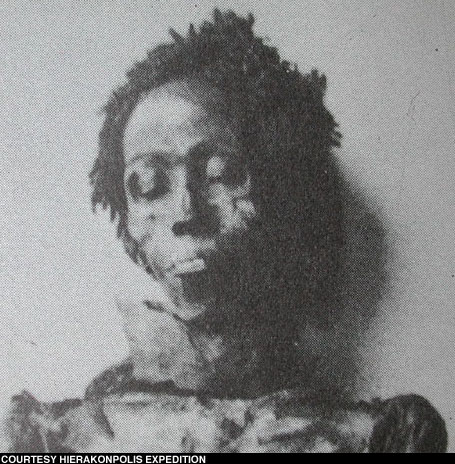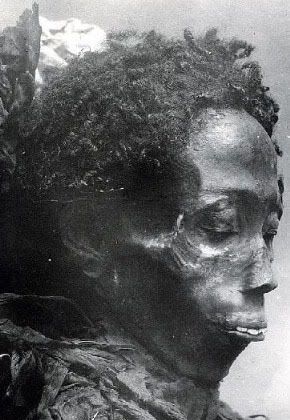Samuel Coleridge-Taylor (15 August 1875 – 1 September 1912) was an
English composer who achieved such success that he was once called the "African
Mahler"
Life and work
Coleridge-Taylor was born in 1875 in
Holborn,
London, to Alice Hare Martin, an English woman, and Dr Daniel Peter Hughes Taylor, a
Sierra Leonean Creole. They were not married. He was named Samuel Coleridge Taylor. His surname was Taylor, and his middle name of Coleridge was after the poet
Samuel Taylor Coleridge.His family called him Coleridge Taylor.
[ He later affected the name Samuel Coleridge-Taylor, allegedly following a printer’s typographical error. Daniel Taylor returned to Africa by February 1875 and did not know that he had a son in London. He was appointed
coroner for the
British Empire in
The Gambia in the late 1890s.
Coleridge-Taylor was brought up in
Croydon by Martin and her father Benjamin Holmans. Martin's brother was a professional musician. Taylor studied the violin at the
Royal College of Music and composition under
Charles Villiers Stanford. He also taught, being appointed a professor at the
Crystal Palace School of Music; and conducted the orchestra at the Croydon Conservatoire.
In 1899 Taylor married a fellow student at the RCM, Jessie Walmisley, despite her parents' objection to his mixed-race parentage. She left the college in 1893. They had a son Hiawatha (1900–1980) and a daughter
Avril, born Gwendolyn (1903–1998), who became a conductor-composer in her own right.
By 1896, Coleridge-Taylor had earned a reputation as a composer. He was later helped by Edward Elgar, who recommended him to the Three Choirs Festival. There his Ballade in A minor was premièred. His early work was also guided by the influential music editor and critic August Jaeger of music publisher Novello; he told Elgar that Taylor was "a genius."
On the strength of
Hiawatha's Wedding Feast, which was conducted by Stanford at its 1898 premiere and proved to be colossally successful, Coleridge-Taylor made three tours of the United States, which increased his interest in his racial heritage, and at one stage seriously considered migrating there.In 1904, he was received by President
Theodore Roosevelt at the White House, a very unusual honour in those days for a man of African descent and appearance.
He sought to do for African music what Johannes Brahms did for Hungarian music and Antonín Dvořák for Bohemianmusic. Having met the American poet Paul Laurence Dunbar in London, Taylor set some of his poems to music. A joint recital between Taylor and Dunbar was arranged, under the patronage of US Ambassadors
John Milton Hay, by London resident and African-American playwright
Henry Francis Downing.Dunbar and other black people encouraged him to consider his Sierra Leonean ancestry and the music of the African continent.
Coleridge-Taylor was sometimes seen as shy, but effective in communicating when conducting. Composers were not handsomely paid for their efforts and often sold the rights to works outright, thereby missing out on royalties that went to publishers who always risked their investments.
Hiawatha's Wedding Feast sold hundreds of thousands of copies, but Coleridge-Taylor had no conception of how successful it would become, as he had sold it outright for the sum of 15
guineas. After his death in 1912, the fact that he and his family received no royalties from what was one of the most successful and popular works written in the previous 50 years led in part to the formation of the
Performing Rights Society. He did, however, receive royalties for other compositions.
He was much sought after for adjudicating at festivals. Coleridge-Taylor was 37 when he died of
pneumonia a few days after collapsing at West Croydon railway station. He was buried in Bandon Hill Cemetery,
Wallington, Surrey (today in the
London Borough of Sutton).
King George V granted his widow a pension of
£100, evidence of the high regard in which the composer was held. A memorial concert was held later in 1912 at the
Royal Albert Hall and garnered £300.
Coleridge-Taylor's work was later championed by
Malcolm Sargent, who between 1928 and 1939 conducted ten seasons of a costumed ballet version of
The Song of Hiawatha at the
Royal Albert Hall with the Royal Choral Society (600 to 800 singers) and 200 dancers.
Legacy
Blue plaque in Croydon on the house in which Coleridge-Taylor died
Coleridge-Taylor's greatest success was undoubtedly his
cantata Hiawatha's Wedding-feast, which was widely performed by choral groups in England during Coleridge-Taylor's lifetime and in the decades after his death. Its popularity was rivalled only by the choral standards
Handel's
Messiah and
Mendelssohn's
Elijah.
The composer soon followed
Hiawatha's Wedding-feast with two other cantatas about Hiawatha,
The Death of Minnehaha and
Hiawatha's Departure; all three were published together, along with an Overture, as
The Song of Hiawatha, Op. 30. The tremendously popular
Hiawatha seasons at the Royal Albert Hall, which continued till 1939, were conducted by Sargent and involved hundreds of choristers, and scenery covering the organ loft.
Hiawatha's Wedding-feast is still occasionally revived.
Coleridge-Taylor also composed
chamber music,
anthems, and the
African Dances for
violin, among other works. The
Petite Suite de Concert is still regularly played. He set one poem by his near-namesake
Samuel Taylor Coleridge,
The Legend of Kubla Khan.
Coleridge-Taylor was greatly admired by African Americans; in 1901, a 200-voice African-American chorus was founded in Washington, D.C., named the Samuel Coleridge-Taylor Society. He visited the USA three times, receiving great acclaim, and earned the title "the African Mahler" from the white orchestral musicians in New York in 1910.There is a school named after him in Louisville, Kentucky: Samuel Coleridge-Taylor Elementary School.
Coleridge-Taylor composed a violin concerto for the American violinist Maud Powell,
Yall are more than free to contribute to the thread but lets at least be organized and not flood shyt. The end of this song mentions my first candidate up to bat. IMO, one of the forefathers of Black Nationalism. The abolitionist David Walker.















